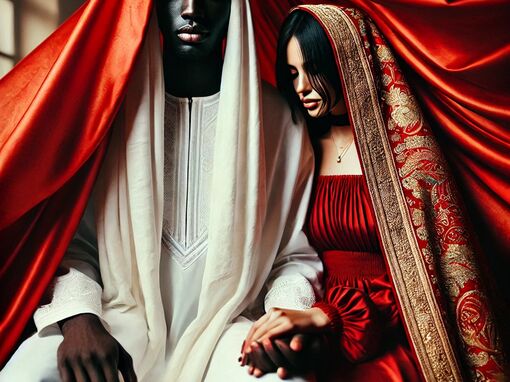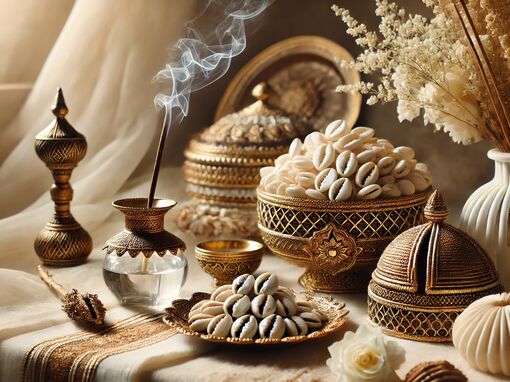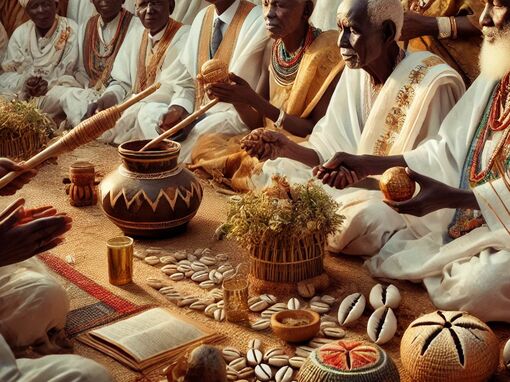
Ewelina & Omar
Ewelina & Omar
The Jirtig 🇬🇧🇵🇱
JIRTIG
🇬🇧 The Jirtig is a cherished Sudanese wedding tradition that blends Nubian heritage with Sudanese customs. Led by the family matriarchs, the ceremony celebrates the bond between the newlyweds as they begin their new life together. It symbolizes protection, prosperity, and blessings for the couple. Though the Jirtig ceremony is deeply cultural, it is not a religious ritual.
The bride and groom sit together on a special seat adorned in red and gold colours, which are considered auspicious in Sudanese culture. The red colour represents protection, while gold symbolizes wealth and prosperity.

Traditional Jirtig items:
Garmasis: The bride and groom wear Garmasis (red and gold fabrics/wraps) that symbolize protection and prosperity. The rich colours are believed to ward off evil and bring good fortune.
Red threads and beads: Tied around the couple’s wrists and heads, symbolize unity and protection. Crescent Moon: A crescent-shaped ornament that is applied to the groom’s head symbolizes renewal and
growth, invoking blessings of fertility and prosperity for the couple's future.
Bakhoor (incense/perfume): Incense and perfumes are shared with the couple and guests to purify the air and ward off evil spirits.
Kalasa (bowl): Filled with milk or water to sprinkle the couple for good fortune. Some couples even choose to spit milk in each other’s faces for protection against evil!
Exchange of Dates and/or Grains: Dates symbolize sweetness and fertility, while grains (wheat or sorghum) represent abundance. This exchange, performed 7 times, between the couple symbolizes wishes for a prosperous and fruitful marriage.

Songs and Rituals
Elders, usually women, lead the ceremony by singing special songs and performing blessings, ensuring the couple has a prosperous and happy future.

In Sudanese culture, the number seven symbolizes protection and completeness. It is often used in rituals, like the Jirtig, to ward off evil and bring blessings. Actions repeated seven times, invoke wholeness and ensure a prosperous, balanced future. The number is seen as sacred and tied to both protection and renewal, marking important life events with its symbolic power.
The ceremony is led by the matriarchs of the families, whose wisdom and blessings are seen as vital for the couple’s future happiness and protection. Matriarchs commonly perform Zagroota, traditional chants to bless the couple with happiness, fertility, and long life.
Guests are invited to witness this symbolic Jirtig ceremony. It is a communal celebration that welcomes guests to join in cheers for the couple, enjoyment of traditional music, and an immersion in the traditional colours and smells of the Sudan. It is not only considered a ritual of protection but also a celebration of love, culture, and the blessings of marriage
🇵🇱 Jirtig: Tradycja Ślubna w Sudanie
Jirtig to popularna sudańska tradycja ślubna, która łączy dziedzictwo Nubii z sudańskimi zwyczajami. Prowadzona przez Matriarchinie obu Rodzin, ceremonia celebruje związek nowożeńców, którzy rozpoczynają wspólne życie. Symbolizuje ochronę, pomyślność i błogosławieństwa dla Pary Młodej. Choć ceremonia Jirtig jest głęboko zakorzeniona w kulturze, nie jest rytuałem religijnym.
Panna Młoda i Pan Młody siedzą razem na specjalnym siedzeniu ozdobionym czerwonymi i złotymi kolorami, które w sudańskiej kulturze uznawane są za dające pomyślność. Czerwień symbolizuje bezpieczeństwo, a złoto – bogactwo i dostatek.
Tradycyjne elementy Jirtig:
Garmasis: Panna Młoda i Pan Młody noszą garmasis (czerwone i złote tkaniny/opaski), które symbolizują bezpieczeństwo i pomyślność. Wierzy się, że te wyraziste kolory odpędzają zło i przynoszą szczęście.
Czerwone nici i koraliki: Zawiązane na nadgarstkach i głowach Pary Młodej symbolizują jedność i bezpieczeństwo.
Półksiężyc: Półksiężycowy ornament umieszczany na głowie Pana Młodego symbolizuje odnowę i rozwój, przynosząc błogosławieństwo płodności i pomyślności dla przyszłości Pary Młodej.
Bakhoor (kadzidło/perfumy): Kadzidło i perfumy są dzielone pomiędzy Parą Młodą, a Gośćmi, aby oczyścić powietrze i odpędzić złe duchy.
Kalasa (miska): Wypełniona mlekiem lub wodą do skropienia Pary Młodej na szczęście. Niektóre Pary Młode decydują się nawet na splunięcie mlekiem na twarz partnera, aby zapewnić ochronę przed złem!
Wymiana daktyli i/lub ziaren: Daktyle symbolizują słodycz i płodność, a ziarna sorgo– obfitość. Wymiana ta, wykonywana 7 razy, między Parą Młodą symbolizuje życzenia dla dostatniego i owocnego małżeństwa.
W sudańskiej kulturze liczba 7 symbolizuje bezpieczeństwo i pełnię szczęścia. Liczbę tę często używa się w rytuałach, takich jak Jirtig, aby odpędzić zło i przynieść błogosławieństwo. Czynności powtarzane siedmiokrotnie przywołują nierozerwalność i zapewniają pomyślna, zrównoważoną przyszłość. Liczba ta uznawana jest za świętą i związaną, zarówno z bezpieczeństwem, jak i odnową, wyznaczając symboliczne znaczenie ważnych wydarzeń życiowych.
Ceremonię prowadzą Matriarchinie Rodzin Sudańskich, których mądrość i błogosławieństwa są uznawane za kluczowe dla szczęścia i ochrony przyszłości Pary Młodej. Matriarchinie Rodzin Sudańskich często wykonują Zagroota, tradycyjne pieśni błogosławiące Parę Młodą szczęściem, płodnością i długim życiem.
Goście są zaproszeni do uczestnictwa w tej symbolicznej ceremonii Jirtig. Jest to do wspólnego świętowanie, podczas którego goście mogą dołączyć do wiwatów na cześć pary, cieszyć się tradycyjną muzyką oraz zanurzyć się w tradycyjnych kolorach i zapachach Sudanu. Jirtig nie jest tylko rytuałem ochronnym, ale również świętem miłości, kultury i błogosławieństw małżeństwa.